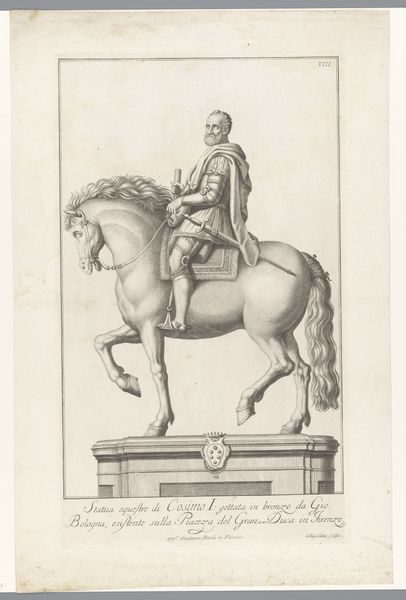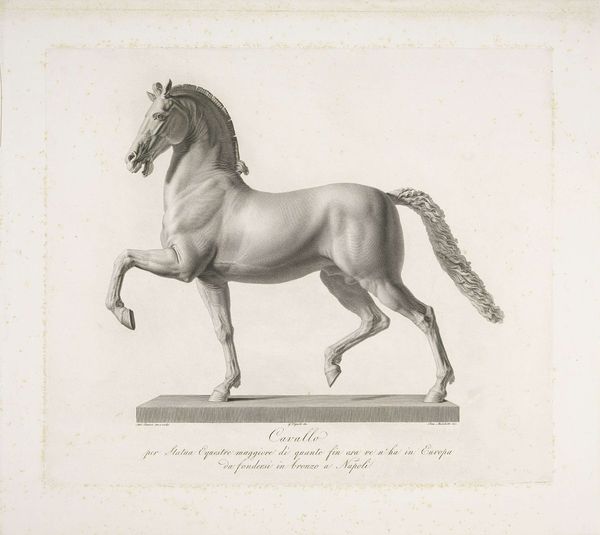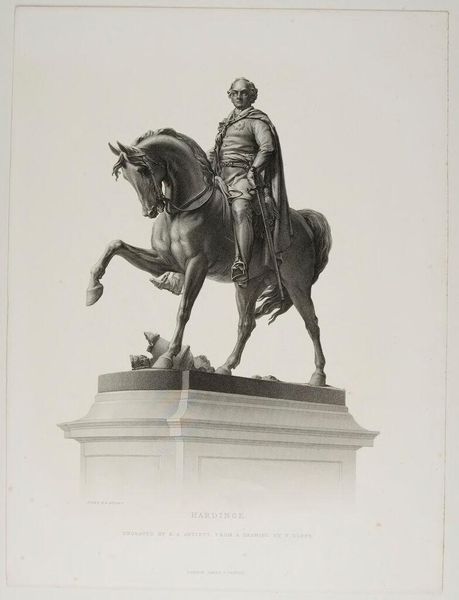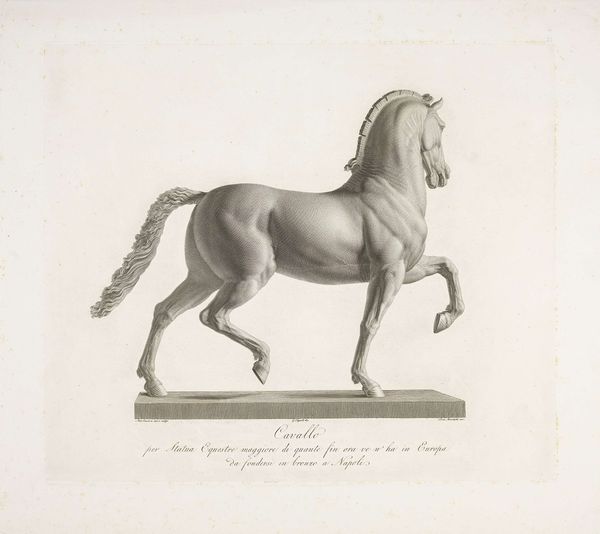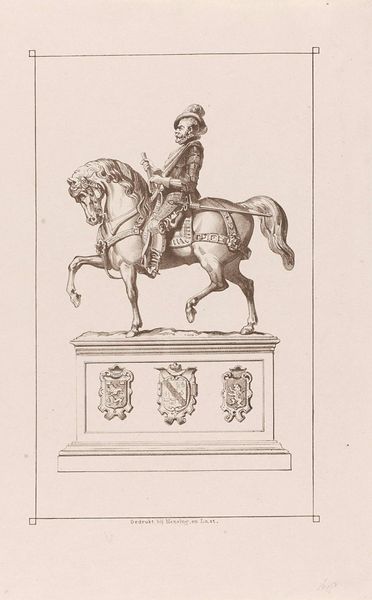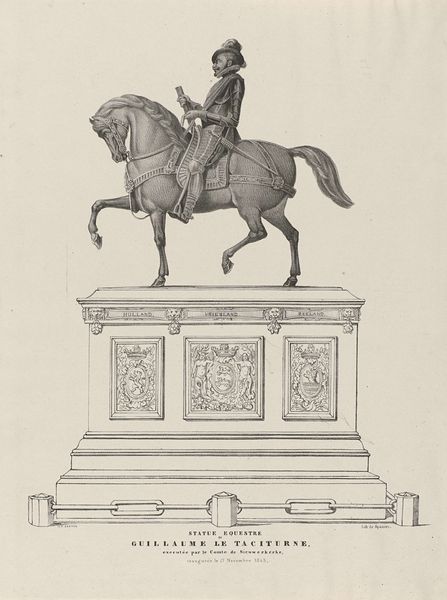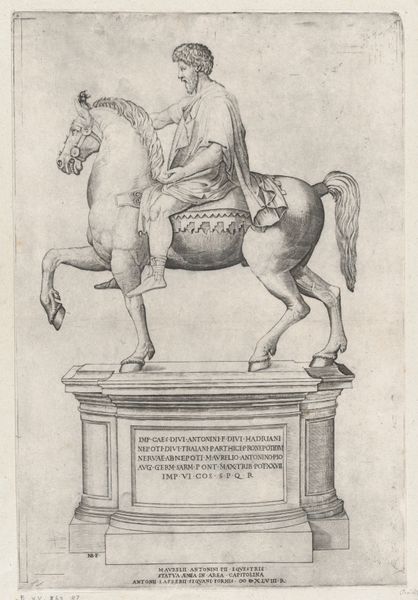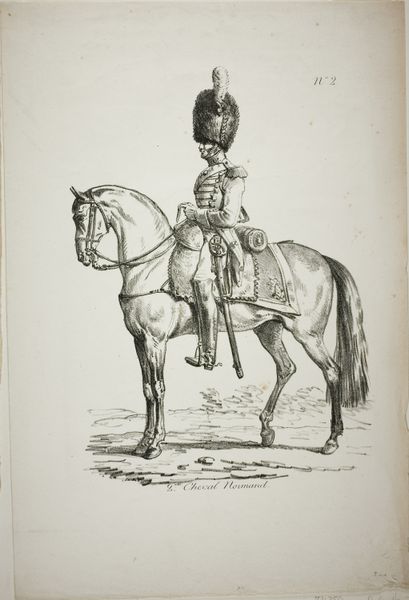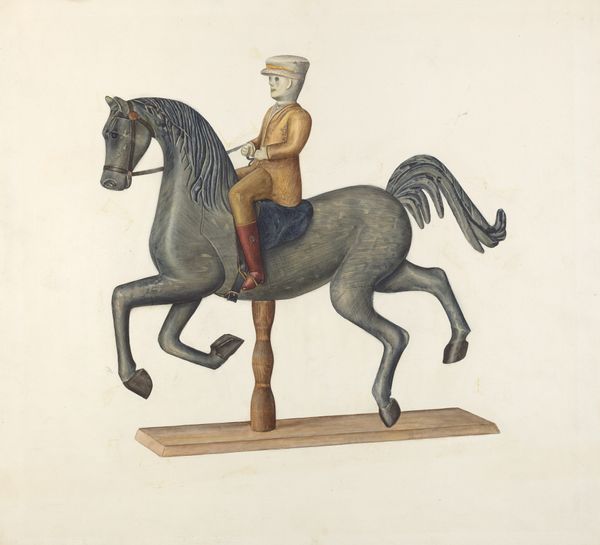
print, metal, engraving
#
portrait
#
neoclacissism
# print
#
metal
#
pencil drawing
#
history-painting
#
academic-art
#
italian-renaissance
#
engraving
Dimensions: height 502 mm, width 421 mm
Copyright: Rijks Museum: Open Domain
Pietro Fontana created this print of an equestrian statue of Charles III of Spain sometime in the late 18th or early 19th century. It is made using a technique called etching, where lines are incised into a metal plate with acid, and then the plate is inked and printed. Consider the labor involved: the artist would have needed to be proficient in drawing, chemistry, and the operation of a printing press. This print would have been relatively easy to produce in multiples, and affordable compared to a sculpture. It allowed for the dissemination of imagery far and wide. Fontana's decision to depict the statue is itself significant. Equestrian statues have historically been a means of projecting power and authority. By reproducing this monument in print form, Fontana democratizes access to the image, making it available to a wider audience. It reminds us that materials and methods of production are never neutral. They always play a role in shaping meaning.
Comments
No comments
Be the first to comment and join the conversation on the ultimate creative platform.
